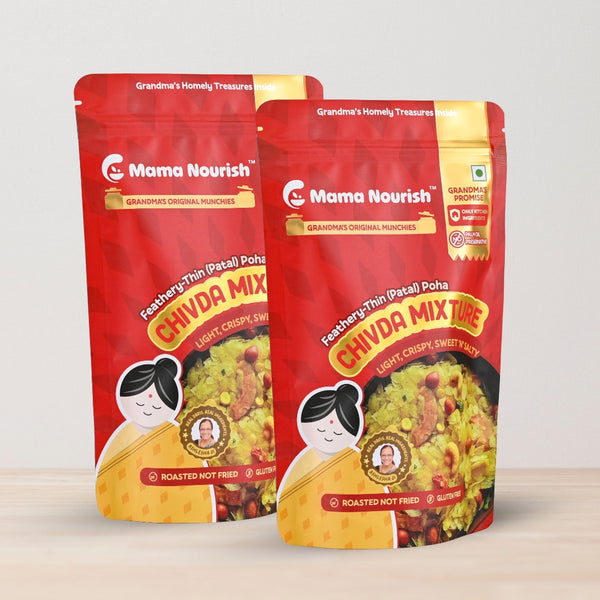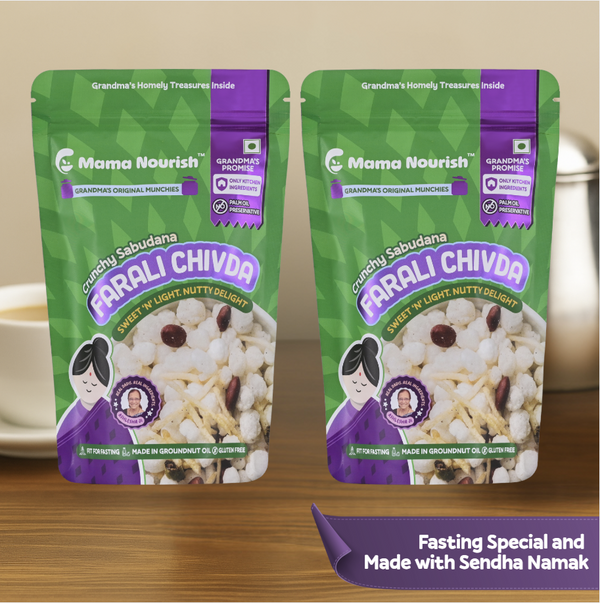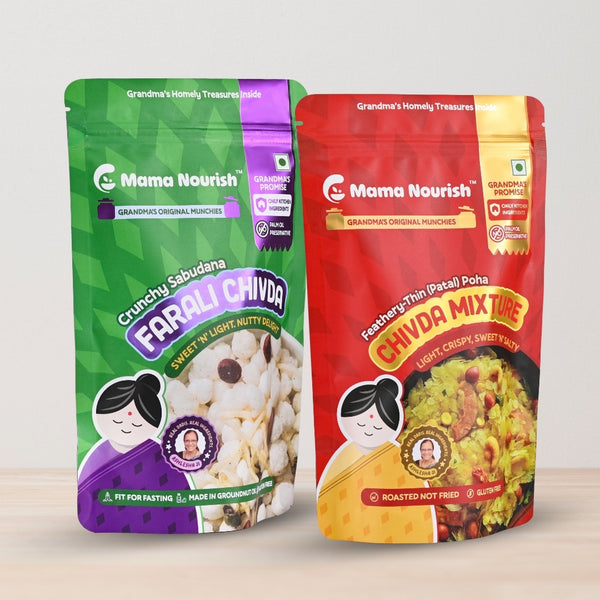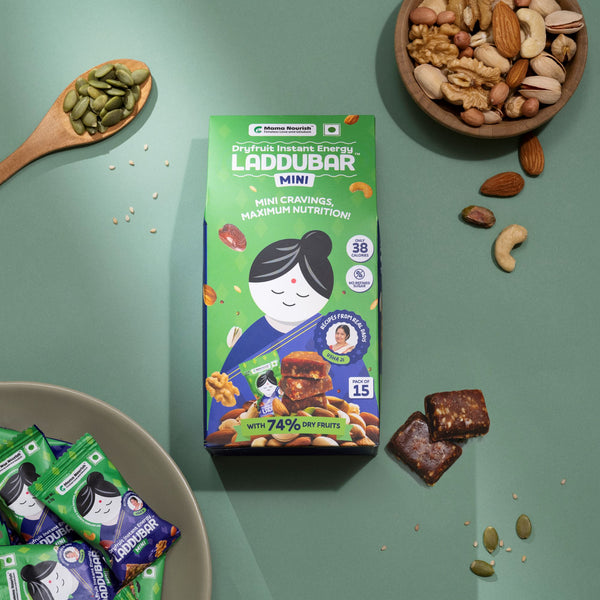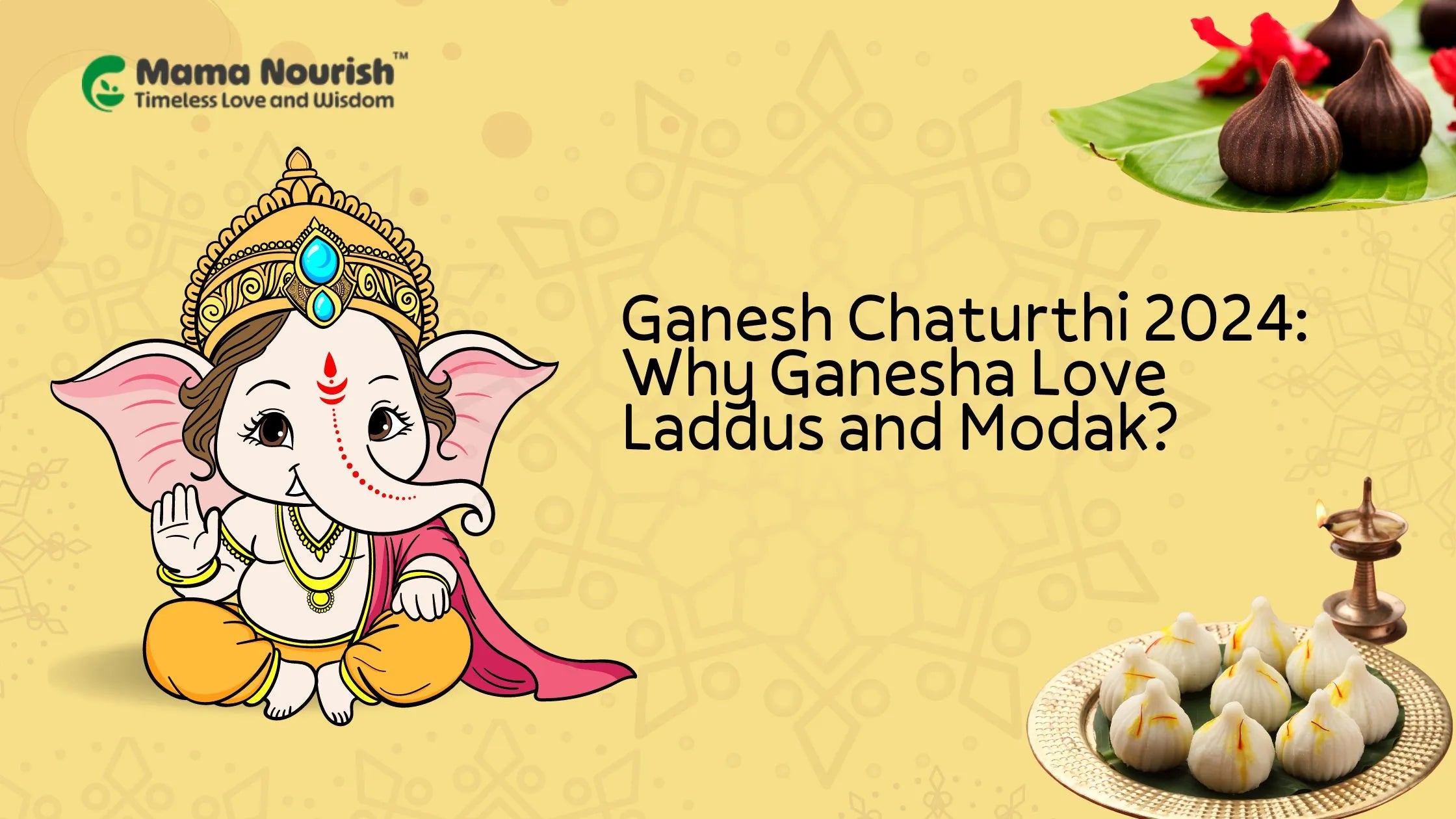
Ganesh Chaturthi 2024: Why Ganesha Love Laddus and Modak?
It is again that time of the year when devotees are busy buying clay idols of lord Ganesha, making Ganesha's favourite foods and the air is filled with chants- “Ganpati bappa morya”!
This year's Ganesh Chaturthi falls in September. The festival Ganesh Chaturthi, also called Vinayaka Chaturthi, Pillayar Chaturthi and Ganesh Jayanti, celebrates the birthday of lord Ganesha.
Lord Ganesh is the Hindu god of wisdom and prosperity. Also called lord ‘Vighnaharta’ is known to remove all the obstacles devotees may encounter in their lives. Being one of the most beloved Gods, the Ganesh Chaturthi is celebrated in a big way in India and by Hindus abroad.
Ganesh Chaturthi: History and Significance
The Ganesh Chaturthi is a 10-day festival during which devotees welcome the God of wisdom to their homes. They clean the house, buy Ganesha idols, do Ganpati decoration, perform Vinayaka Chaturthi pooja and prepare bhog or food offerings to Ganesha.
Peshwas used to celebrate the Ganesh Chaturthi, but it was made into a great gathering with grand festive and nationalistic vibes by freedom fighter Bal Gangadhar Tilak. During those times, the festival became an ensemble of devotion, tradition and nationalist ideas- a defiance against the tyrannical British rule!
Today, Ganesh Chaturthi is celebrated both at home by buying clay Ganesha idols and in groups and communities by making elaborate pandals or stages on which Lord Ganesh is displayed in various forms. Finally, after 10 days, the idols were immersed in water. The grand procession of pandals brings a vibrant and electrifying festive mood to metro cities like Mumbai.
As the idols are immersed in water, it is believed that Ganesha has returned to his abode.

While talking about Ganesh Chaturthi–it's hard to miss Ganesha's favourite food.
As we all know, our beloved Ganesha loves to eat a lot! And his love for laddus and modak is well-known.
There are interesting mythological stories and folklore about Ganesha and his favourite foods. These foods, including modak and laddus, are added to bhog or food offerings made to lord Ganesha during Ganesh Chaturthi and shared with everyone.
Ganesha and Modak
The Ganesha is served with 21 or 101 Modaks during Ganesh Chaturthi and is famously called ‘modakapriya’, meaning one who likes modak.

One of the stories about Ganesh and Modak goes like this- once, goddess Parvathi and lord Shiva got Modak as a present from other gods. The Modak was a special one; after consuming it, a person would attain higher levels of knowledge. Both of her sons, Ganesha and Lord Kartikeyan wanted to eat modak for themselves and didn't want to share.
To resolve the issue Parvathi told them that whoever travelled around the universe and came back first would get the modak. The Subramaniya set off immediately on his mount peacock.
But, Ganesha simply walked around Lord Shiva and Parvati. When asked about why he did that, Ganesh said that his parents meant the world to him. The goddess was happy to hear Ganesha's answer full of wisdom. And Ganesha got the Modak!
Another famous story is related to Anusuya, the wife of ancient Rishi Atri. Once, when lord Shiva, goddess Parvathi and Bal Ganesha visited the saint’s home, Anusuya insisted that she would only feed lord Shiva after Bal Ganesh's appetite was satiated. Well, Ganesha, being a foodie, kept eating, and finally, the anxious Anusuya gave Modak to Bal Ganesh. And after eating it, Ganesha felt full and gave out a burp. Simultaneously lord Shiva also felt full and gave out 21 burps. Thus, Modak is considered an important food to be served as a part of the bhog made during Ganesh Chaturthi.
It is also believed that goddess Parvathi’s mother used to feed Modak to Ganesha to satiate his big appetite.
From all these stories, it is pretty evident that Ganesha adores Modak. In fact, during Ganesh Chaturthi, different kinds of Modaks are made in various parts of our country.
Various types of modak traditionally made include-
1. Ukadiche Modak
These are steamed modaks made from rice flour stuffed with a mixture of jaggery, grated coconut, and cardamom. In the Southern part of India modak is also known by the name ‘Kozhukattai’. It is prepared similarly to the Ukadiche modak.
2. Fried Modak
This is a deep-fried version made with a sweet filling similar to steamed ones but wheat flour is used. The modak is fried until it turns golden brown.
3. Mawa Modak
These soft modaks are made from khoya (milk solids) and sugar, usually flavoured with cardamom.
Ganesha's Love for Laddus
The Ganesha's Love for Laddus is evident from his numerous idols and pictures depicting him holding Laddus. There is, in fact, an interesting mythological story about Ganesha and Laddus!

Once Kubera, the god of wealth, invited Ganesha home to flaunt his wealth. As a foodie, Ganesha was not into these riches but into delicious food and started eating. The sumptuous feast prepared by Kubre couldn't satiate his divine appetite.
And Ganesha started to gobble raw food when cooked ones were finished. Still unsatisfied, Ganesha began to eat golden utensils from Kubera’s kitchen. The god of wealth realized that Ganesha could eat up all his wealth, so the perplexed kuber ran off to seek help from Lord Shiva.
Lord Shiva gave Kuber a laddu made by goddess Parvathi and asked him to feed Ganesha. The kuber returned to his home and presented the laddu Ganesha. After eating laddus Ganesha felt full and satisfied.
Therefore, it became auspicious to offer laddus to lord ganesha to get his blessings. Hence, laddus are a must-have for Ganesh Chaturthi.
Being a diverse country of rich culinary heritage, there are numerous varieties of laddus made across India. And here are some of them-
1. Dry Fruit Laddu
Dry fruit laddu or dry fruit ladoo or dry fruit ke laddu is made during both festive seasons and regular days. It's a healthy mix of dry nuts, seeds, jaggery, ghee, whole wheat flour and dates.

2. Churma Laddu
Churma laddu or churma ke laddu is a delicious treat from Gujarati and Rajasthan’s Cuisine. The basic Churma laddu is made from jaggery, whole wheat flour and ghee. Additionally, spices and nuts are added to enhance flavours. Especially during Ganesh Chaturthi and other festivals. The generally called aate ka laddu refers to laddus made from whole wheat flour, a sweetener and ghee.
4. Murmura Laddu
Ganesha is fond of eating puffed rice. Murmura laddu or murmure ke laddu pori urundai or puffed rice laddu is a delicious sweet ball made just from two ingredients murmura or puffed rice and melted jaggery.

5. Besan ke Laddu
The Besan ke Laddu or Besan laddu is a popular laddu made during Ganesh Chaturthi. The Besan refers to flour made from split and husked black chickpeas( chana dal). Traditionally, Besan laddu is made using ghee and ‘bura’ sugar, which is less refined and processed than white sugar and hence considered a healthier option compared to refined sugar. You can also make these ladoos with jaggery. To make besan ke laddu healthier and tastier, dry fruits are often added.
6. Coconut Laddu
Coconut laddoos/coconut laddu/nariyal laddu / Nariyal ke laddu is popular across India and it is made with many regional variations. The coconut laddu is made using grated coconut, melted jaggery, cardamom and nuts. In some regions, rice and milk are also added while making coconut laddu.

7. Boondi ke Laddu and Motichur Laddu
The Bondi ke laddu or Bundi ke laddu is made from balls made of gram flour, but the size of the balls is bigger than the motichoor laddu. There are many varieties of boondi laddu and one of them is Darbesh from Bengal. The Motichur laddu or motichoor laddu or motichur ke laddu is also made from gram flour which is fried and made into tiny balls, hence the name motichur or motichoor meaning crumbleed pearls. The origin of motichoor ladoos is traced to the northern region, but it has been popular all over India for ages. Many are attempting to make healthier versions with jaggery.
Other variations like ragi laddu, rava laddu, gond laddu, etc., are also made in different parts.
Other Traditional Recipes Made During Ganesh Chaturthi
Along with laddus and modaks, other traditional recipes served to lord ganesha include banana sheera, kalonji, puran poli, shrikhand, patholi, sundal, coconut barfi, puffed rice dishes etc. These recipes also vary from region to region.
Note:While you are immersed in the festive vibes of Ganapati Chaturthi, don't forget to follow mindful eating
Share

